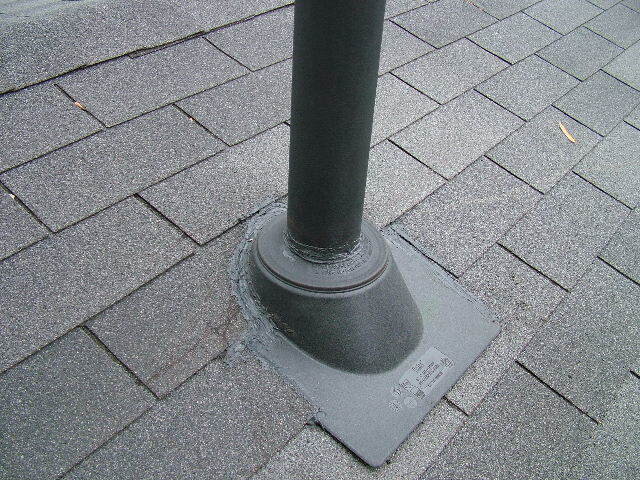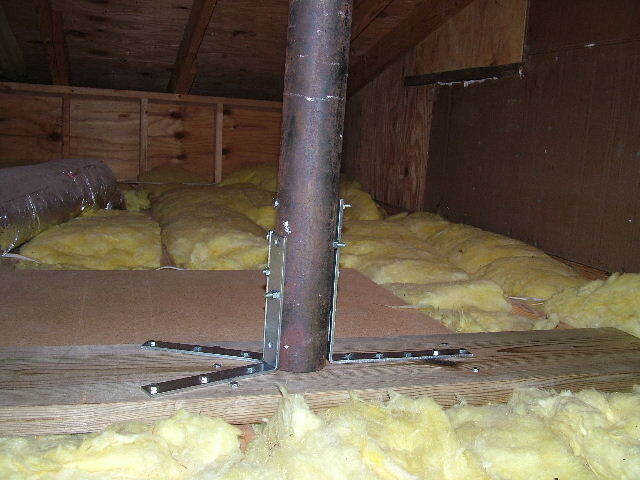I'm a structural engineer, and by inspection can tell you that your mount is far from satisfactory. Furthermore, the chart in the link above, which seems to provide moment as a function of dish size and wind speed, makes no sense without supplementary information.
I quickly searched and did find this thread that discusses wind loading on a 1.8m Andrews dish with values that actually make sense. I would try to find something similar for your or an equivalent dish.
Satellite Antenna Wind Load Test Data - Satcoms UK - Global VSAT & Satellite Community
Absent better data for your dish, one could scale those forces/moments by the ratio of dish area as a reasonable approximation. Make a free body diagram of the pole and apply the corrected dish load at the top of the pole to determine reaction forces at the rafter and at the base of the pole. This would allow you to size your pole mounts correctly.
If we use the ~1800 lbf horizontal force for the 1.8m dish, the load at the rafter is going to be substantially greater than 1800 lbf (depending on pole support locations, likely 2-3 times greater). The rafter, by itself doing its intended job of supporting only the roof, is not designed or capable of taking ANY horizontal load.
I can help you figure out loads, but I can't/won't help you determine a satisfactory mounting system due to liability concerns. If I were to design a support system that did not extend the pole to the ground, it would need to be much more elaborate and many more structural aspects of the home would need to be understood and properly analyzed. Also understand that a structure that simply "works" under static loading would be much less robust that one designed for worst case loading, which an engineer must consider.








